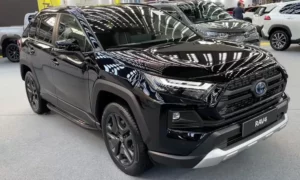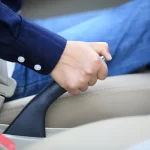Seeing “Check Hybrid System” flash on your dashboard isn’t the end of the world—but it’s definitely your car’s way of saying “we need to talk.” This warning means something in your high-voltage system has crossed a critical threshold. Here’s what you need to know to fix it without emptying your wallet.
What Does the Toyota Hybrid System Malfunction Warning Actually Mean?
Your hybrid’s brain—the Hybrid Vehicle Control ECU—monitors everything happening between the battery, inverter, and motors. When it spots trouble, it throws up the Check Hybrid System warning.
The Red Triangle of Death
If you see that infamous red triangle (the Master Warning Light), you’re dealing with a “hard fault.” This isn’t your car being dramatic. It’s detected something that could be dangerous—like high-voltage isolation breaches or severe battery cell failure.
What happens next? Your car might cut power completely. It’s protecting itself (and you) from potential electrical fires or worse.
Limp Mode: Your Car’s Safety Net
Sometimes your hybrid enters “limp mode” instead of dying completely. You’ll notice:
- Sluggish acceleration
- Speed capped around 40 mph
- No air conditioning
- Electric motor disabled
Don’t treat limp mode as a free pass to keep driving. If your inverter coolant pump failed (code P0A93), every mile you drive generates heat that can fry your remaining functional components. A $500 pump repair becomes a $3,000 inverter replacement.
The Usual Suspects: What Causes This Warning
Your 12V Battery Is Playing Tricks
Before you panic about expensive hybrid components, check your 12V auxiliary battery. It’s the most common culprit behind false hybrid warnings.
Here’s why: When you press the power button, the 12V battery boots up all the computers. If it’s weak, voltage drops during startup. The ECUs crash mid-boot and throw phantom error codes.
Quick test: Access your hidden diagnostic menu by holding the “Info” button while flashing your headlights three times in accessory mode. Check the voltage reading:
- 12.6V-12.8V = healthy
- 11.9V-12.3V = replace soon
- Below 11.8V = replace now (it’s causing false codes)
The High-Voltage Battery Is Tired
Your hybrid battery isn’t like a regular car battery. It’s 28 modules (in a Gen 3 Prius) working together. As they age, they stop playing nice with each other.
The “Delta SOC” problem: When one module degrades faster than the others, the voltage imbalance (Delta SOC) grows. Once it hits 20-40% variance, you’ll get code P0A80—the “replace hybrid battery pack” code.
You can spot this early using the Dr. Prius app with a $30 OBD2 scanner. Healthy battery modules move in sync. Failing ones drop significantly under load.
Gen 3 Prius: The Inverter Time Bomb
If you own a 2010-2014 Prius, listen up. There’s a known design flaw in the Intelligent Power Module (IPM).
What fails: The transistors that handle high-current switching develop cracks from thermal stress. When they fail, you get code P0A94 and potentially a stall while driving at highway speeds.
The good news: Toyota’s ZE3 Warranty Enhancement extends inverter coverage to 15 years with unlimited mileage. If you paid out-of-pocket for an inverter replacement before knowing about this, you might qualify for reimbursement through the class action settlement.
Toyota issued safety recalls E0E, F0R, and J0V with software updates to reduce the thermal load. Get this done—it won’t completely fix the hardware weakness, but it helps.
RAV4 Hybrid “Cablegate” Corrosion
Own a 2019-2022 RAV4 Hybrid or Highlander Hybrid? Check your high-voltage cables now.
The problem: The rear motor cable connector traps road salt and moisture. This creates galvanic corrosion that eats through the shielding and eventually the connector itself.
Early warning signs:
- AM radio static that changes with vehicle speed
- Intermittent “Check Hybrid System” warnings
- Code P0AA6 (isolation fault)
Toyota’s Customer Support Program 22TE09 extends warranty coverage to 8-10 years/100,000-150,000 miles (depending on VIN). The fix replaces the cable with a redesigned connector that drains water instead of trapping it.
Critical Error Codes You Need to Know
| Code | What It Means | Action Required |
|---|---|---|
| P0A80 | Replace hybrid battery pack | Battery modules severely imbalanced—Delta SOC exceeded threshold |
| P0A94 | DC/DC converter performance | Gen 3 Prius inverter failure—check ZE3 warranty eligibility |
| P30xx | Battery block malfunction | Specific block identified (P3011=Block 1). Can pinpoint bad modules |
| P0A93 | Inverter cooling system | Coolant pump failing—stop driving to prevent inverter damage |
| P0AA6 | High-voltage isolation fault | DANGER: Voltage leaking to chassis. Don’t drive. Check cables |
| U0100 | Lost communication with ECM | Usually a weak 12V battery, not a hybrid issue |
The Dangerous “Reset Trick” Everyone Tries
Disconnecting your 12V battery for 15 minutes will clear the warning lights. The internet loves this “fix.”
Why it’s risky: You’re just erasing the error message. The actual mechanical or electrical fault is still there, waiting to fail again—potentially when you’re miles from help.
Some owners report doing this monthly for a year. That’s not fixing anything. That’s playing automotive roulette.
Cooling System Failures You Can’t Ignore
Your hybrid has two separate cooling systems, and both love to cause problems.
Battery Cooling Fan (Air-Cooled)
The HV battery has a dedicated fan that sucks cabin air across the modules. It’s usually behind the rear seat or in the quarter panel.
The clog problem: This fan inhales everything—pet hair, dust, lint, French fries. When the intake filter clogs, airflow drops. The battery overheats. Cells degrade faster.
Cleaning the filter takes 20 minutes and costs nothing. Do it annually if you have pets or live in dusty areas.
Inverter Coolant Pump (Liquid-Cooled)
The inverter and motors use a separate liquid cooling loop with an electric pump. In Gen 2 Prius models, this pump loves to fail.
Symptoms of pump failure:
- Code P0A93
- Inverter overheating
- Loss of hybrid power
If you keep driving with a failed pump, you’ll cook your inverter. A $200 pump replacement becomes a $3,000 inverter job.
Battery Repair Options: The Real Numbers
When your battery actually fails, you’ve got choices. Here’s what they’ll really cost you in 2024:
| Repair Type | Cost | Warranty | Best For |
|---|---|---|---|
| OEM Dealership | $3,000-$5,000 | 1-3 years | Newer vehicles under 100k miles |
| Aftermarket New | $2,000-$3,000 | 3-5 years | DIYers wanting new chemistry |
| Mobile Refurbishment | $1,500-$2,000 | Lifetime | Older vehicles over 150k miles |
| DIY Module Swap | $200-$500 | None | High-risk budget option |
The “Whac-A-Mole” Problem with DIY
Replacing individual bad modules sounds smart. Buy a few used modules online for $50 each, swap them out, done.
Why it fails: You’re mixing old tired modules with “fresh” ones. Even if the voltage matches, the internal resistance doesn’t. The system detects the mismatch and throws another code 3-6 months later. You’re back under the car, replacing the next weakest module.
Why Refurbished Batteries Work Better
Companies like Green Bean Battery charge $1,500+ for refurbished packs. That seems expensive for used cells.
The real value: You’re paying for the lifetime warranty. Refurbished batteries will fail again (they’re made of used cells). But when they do, the company comes back and replaces them for free. It’s insurance, not just a battery.
Before You Spend Thousands: Check These First
Bus Bar Corrosion
The copper bars connecting your battery modules can corrode. This increases resistance and causes voltage drops that look like failed cells.
The fix: Remove the bus bars, clean them with a vinegar/salt solution and wire brush, reassemble with proper torque. Sometimes code P0A80 disappears with a $0 repair.
Grid Charging for Prevention
You can slow battery degradation with “grid charging” equipment from Hybrid Automotive. This applies a slow 300-500mA charge from a wall outlet.
What it does: Balances cell voltages and breaks down crystalline formations. Great preventative maintenance. Won’t resurrect a battery with dead cells.
Warranty Coverage You Need to Know About
Model Year 2020 and Newer
Toyota stepped up their game. All 2020+ hybrids get 10 years/150,000 miles on the hybrid battery. The rest of the system (inverter, ECU) stays at 8 years/100,000 miles.
CARB State Advantage
Live in California, Connecticut, Maine, Maryland, Massachusetts, New Jersey, New York, Oregon, Rhode Island, or Vermont? You might have better coverage.
Vehicles sold as PZEV (Partial Zero Emissions Vehicle) in CARB states get 10 years/150,000 miles on hybrid components—even pre-2020 models.
Check your owner’s manual. Coverage depends on where the vehicle was originally sold and currently registered.
What You Should Do Right Now
Stop guessing. Get the actual diagnostic codes read. A generic OBDII scanner won’t cut it—you need one that reads Toyota’s enhanced data.
Check your 12V first. It’s the cheapest fix and solves half of all “Check Hybrid System” warnings.
Verify your warranty status. You might have coverage you don’t know about. Check for ZE3 (Prius inverter), 22TE09 (RAV4 cables), or CARB state extensions.
Don’t drive in limp mode. Get it diagnosed immediately. Continuing to drive can turn a cheap repair into a catastrophic failure.
The Toyota Hybrid System is built to last 300,000+ miles. When it throws a warning, it’s usually one specific component—not the whole system. Find that component, fix it right, and you’ll be back on the road getting 50 mpg for years to come.














